A year and a half later, Israel is still making the same mistakes over humanitarian aid in Gaza.
In the confused days after the Hamas attack on October 7, 2023, Israeli leaders took to the microphones to boast about how vigorously they would block aid into the Gaza Strip.
Two days after the horror, Defense Minister Yoav Gallant declared: “I have ordered a complete siege on the Gaza Strip. There will be no electricity, no food, no fuel, everything is closed.”
That quickly proved unrealistic. Less than two weeks into the war, the siege was lifted, and the first aid trucks bearing food and medicine crossed in from Egypt.
By mid-November, pressure from the US and international organizations pushed Israel to reverse course on fuel as well, and trucks started to bring in fuel tanks for hospitals, aid trucks, water pumps, desalination plants, bakeries and sewage plants.
Fuel would also go to the Paltel telecom company so that Gazans could have phone and internet service.
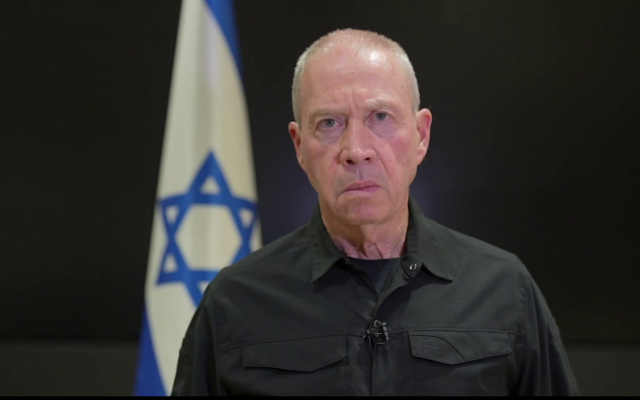
Israel also promised that no aid would come in through the Kerem Shalom crossing or Ashdod Port, as if the route through which the aid traveled made some difference to the outcome of the war.
Predictably, Prime Minister Benjamin Netanyahu relented under US pressure on Kerem Shalom in December 2023, then allowed a massive shipment of aid to go through Ashdod Port the next month.
After a deadly erroneous IDF strike on World Central Kitchen workers in April 2024, Israel went further, advertising that Kerem Shalom would be open for longer hours and that Ashdod Port would be permanently open for aid.
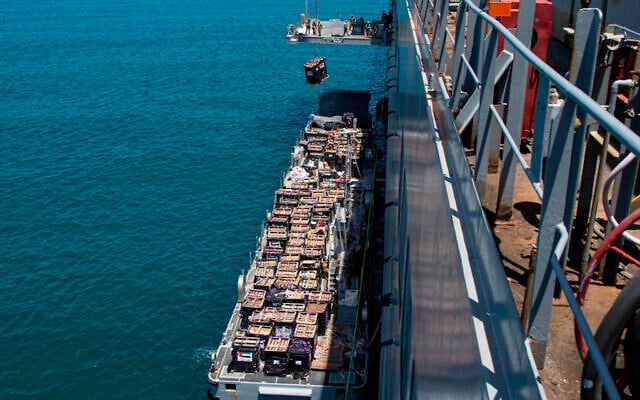
“Israel’s response has been to instinctively deny each request, then ultimately agree to those same demands when circumstances on the ground leave little choice. That approach, which seems built around domestic political calculations, is causing Israel to bleed support even as victory doesn’t seem especially imminent,” this writer noted shortly after the WCK incident. “Instead of showing its allies that it is leading the aid effort, Israel is seen as dragging its feet as the humanitarian situation in the Strip gets worse. That perception — not at all unfounded — is putting the entire campaign in danger.”
Those same words could have been written today.
Creating a crisis
In March, Israel declared that a two-month ceasefire with Hamas had ended, and with it the entry of massive amounts of humanitarian aid.
“Israel has decided to stop letting goods and supplies into Gaza, something we’ve done for the past 42 days,” Netanyahu said on March 2. “We’ve done that because Hamas steals the supplies and prevents the people of Gaza from getting them.”
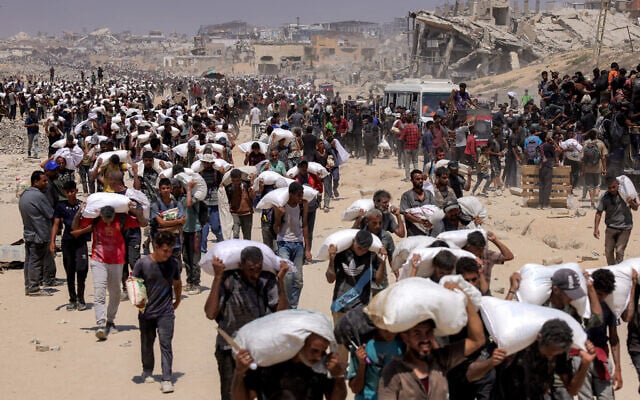
“It uses these supplies to finance its terror machine, which is aimed directly at Israel and our civilians – and this we cannot accept,” he said.
The next day, government spokesman David Mencer was even more pointed: “Food intended for widespread distribution has been feeding the guards that starve our own hostages.
“Get real. The aid we send is used to kill. No more.”

As concerns about famine in Gaza grew in the ensuing months, the Israeli and US governments prepared for a new civilian outfit, the Gaza Humanitarian Foundation, to become the primary vehicle for aid to civilians.
Shortly before the GHF began operations in late May, Defense Minister Israel Katz said that under the new initiative, the civilian population would be evacuated to southern Gaza, where three of the four distribution sites were set up, to drive a wedge between them and Hamas terrorists.
The GHF succeeded in distributing almost 100 million meals in two months. But there were almost daily killings of Gazans on their way to GHF sites, drastically undermining any chance that the effort would have the strategic benefit Israel desired.
Other organizations, like the United Nations World Food Programme, distributed far more food than the GHF over the same period, but regularly used the means of “self-distribution” — a euphemism for letting civilians storm the trucks and grab what they can.
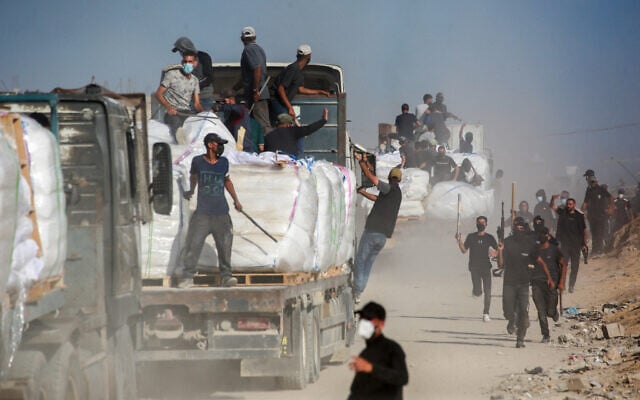
Throughout that two-month period, the humanitarian crisis in Gaza steadily worsened, as international criticism grew in proportion. It reached a crescendo last week as 28 Western allies, including the UK, Australia, Canada, France, and Italy, said in a joint statement that the war in Gaza “must end now,” arguing that civilian suffering had “reached new depths.”
“We condemn the drip feeding of aid and the inhumane killing of civilians, including children, seeking to meet their most basic needs of water and food,” said the statement, calling it “horrifying” that “over 800 Palestinians have been killed while seeking aid.”
The pressure kept mounting.
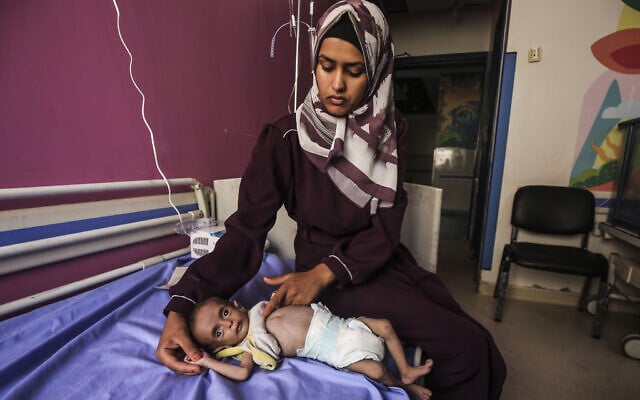
More than 100 aid organizations and human rights groups warned on Wednesday that “mass starvation” was spreading in Gaza. Hundreds of rabbis worldwide signed a letter on Friday calling for Israel to stop using starvation as a “weapon of war.” Even the Israel Medical Association (IMA) sent letters to top defense officials calling for medical equipment and basic humanitarian conditions for Gazans.
Israel’s aid policy since March achieved none of its goals. It didn’t cause Hamas to accept proposals for a hostage deal, nor did it isolate the population from Hamas. The terror group didn’t surrender, and victory doesn’t appear to be any closer.
In fact, Israel’s aid policy rendered a victory even less likely, as it gave most of the world renewed urgency to end the war at any cost in order to stop the shooting and starving deaths of Gazans.
Back to feeding Hamas, apparently
And now, once again, Israel is boasting about the amount of aid it is pumping into Gaza.
The IDF announced on Sunday that it would conduct daily 10-hour pauses in densely populated areas. There would be new aid corridors, and Arab countries would resume airdrops into Gaza. Israel’s Coordinator of Government Activities in the Territories proudly stated that work had begun on a water pipeline from Egypt to the southern Gaza Strip.
Israel even itself dropped aid into Gaza for the first time.

The about-face raises serious questions about Israel’s previous claims. How exactly is anyone going to prevent Hamas from taking over aid dropped from the sky or in the heart of densely populated cities? The government’s recent concerns about feeding Hamas’s guards and funding its terror machine seem suddenly not so pressing. Or, even more worryingly, Israel has backed itself so deeply into a corner that it is willing to allow Hamas to enrich itself in order to relieve international pressure.
Netanyahu has repeatedly announced new aid policies, enforced them just long enough for criticism to reach a fever pitch, then reversed course entirely.
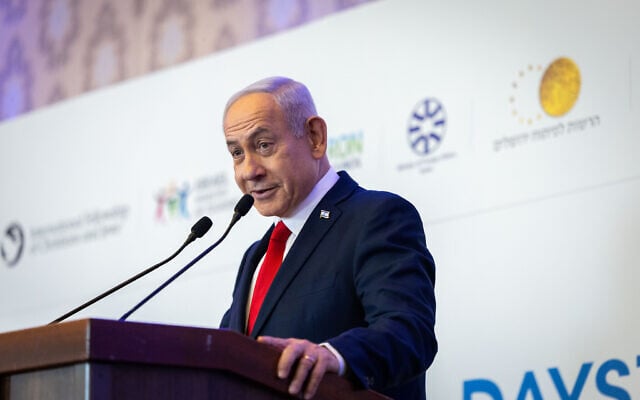
“The wheel must be broken at some point,” said Bar Rapaport of Mitvim: The Israeli Institute for Regional Foreign Policies.
“Israel needs to manage the humanitarian effort in a proactive fashion,” instead of hastily announcing new policies in crisis mode, she urged.
Netanyahu can regain some legitimacy to finish the job against Hamas by showing initiative. That would include opening crossings, appointing a humanitarian aid czar, conducting regular meetings with aid organizations, and even establishing field hospitals on the border.
Most importantly, Israel has to decide what it wants an alternative ruler to Hamas in Gaza to look like.
“There is no one today holding a strategic discussion on what needs to happen on the day after,” said Rapaport.
If there was a clear postwar vision on who replaces Hamas, Israel would have an interlocutor through which to send aid, thereby creating facts on the ground and slowly establishing areas of Gaza ruled by someone other than Hamas.
So far, the government is avoiding that politically sensitive discussion, but it will have to engage in it at some point.
Otherwise, Israel will just keep hearing more promises that the government has finally landed on the key to defeating Hamas, and that victory is right around the corner.

